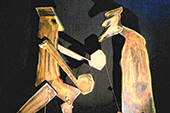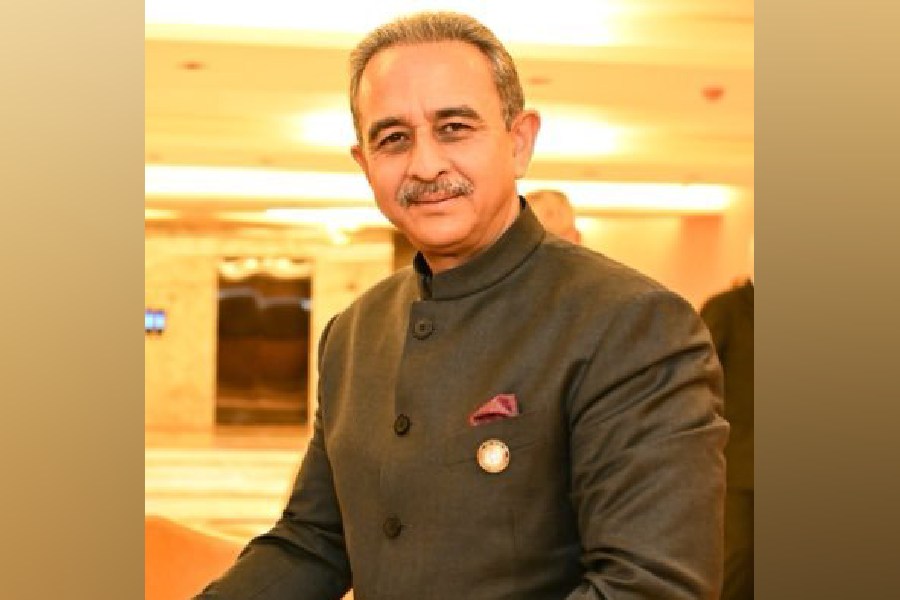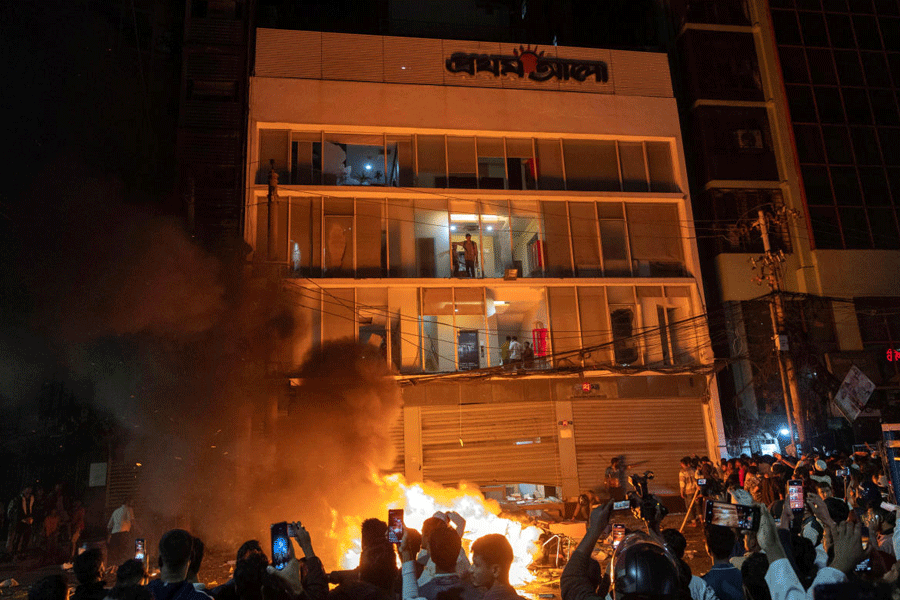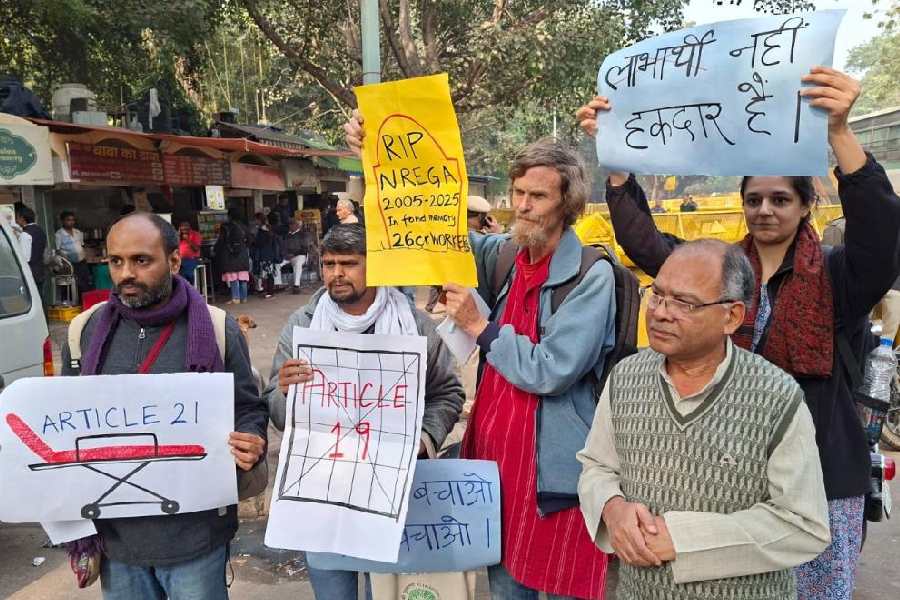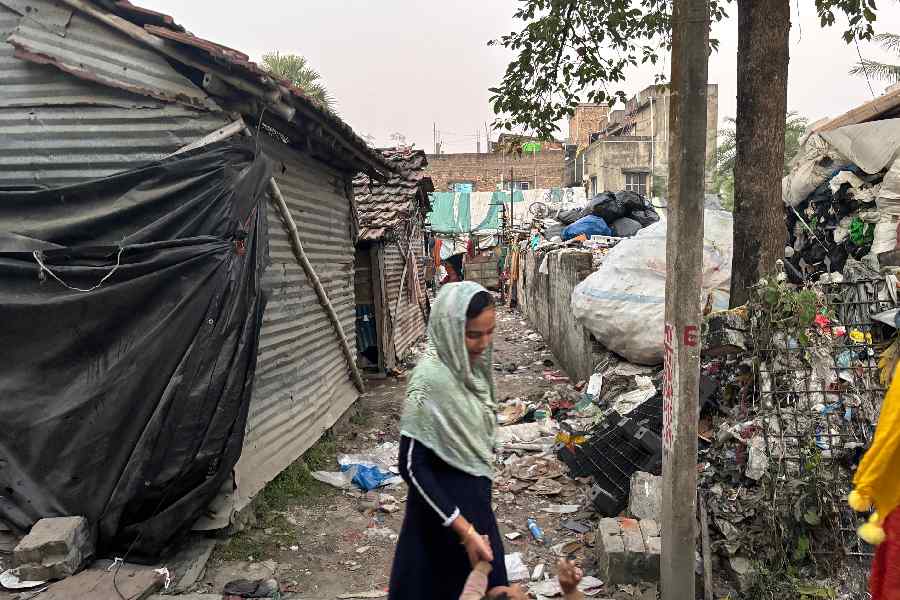 |
 |
| Puppets inspired by Tagore’s doodles and drawings |
Bengalis may cry themselves hoarse about Calcutta still being the cultural capital of India but few well-produced journals or magazines exclusively on the arts are published from here. Bangladesh is luckier. Bengal Foundation of Dhaka has recently published the first issue of a slick Bengali magazine on the arts titled Shilpa O Shilpi, which covers the culture of both Bengals through articles, pictures and photographs with a degree of sophistication not commonly encountered on this side of the Padma.
The soft launch of the quarterly published by Abul Khair of Bengal Foundation was on September 4 at Akar Prakar Gallery in Hindustan Park. On its editorial board are the likes of Anisujjaman, Jogen Chowdhury, Sushobhan Adhikary, Abul Mansur and Iffat Ara Dewan.
According to the publisher’s letter, the magazine is meant to keep alive the culture scene in Bangladesh. Included in this issue are articles on the art of contemporary artists of Bangladesh like Aminul Islam, Mohammad Kibriya and Zainul Abedin, famous for his drawings of the 1943 famine in Bengal. There are tributes to Husain, Chidananda Dasgupta and Begum Sufia Kamal, articles on Rabindranath and Jamini Roy, the architect, Mazharul Islam, Somnath Hore, a revealing piece on the great singer, Kamala Jharia, a report on the first international theatre fest in Dhaka and another on Bangladesh’s participation in the Venice Biennale.
Events in Calcutta such as the Charles D’Oyly exhibition at Victoria Memorial Hall and the launch of KMOMA have been given adequate coverage. The cover painting was done in 1999 by Aminul Islam. The next issue of the magazine will be launched in Calcutta itself soon.
Shilpa O Shilpi is a well laid-out and printed magazine. We hope that it will be able to sustain its quality.
Tagore puppets
 |
| Singing star of yesteryear: Kamala Jharia |
Guess who was Suspect No. 12 on the British police records of pre-Independence India? Rabindranath Tagore. He was also described as “That bearded man in robes who is a poet apparently of some repute.” After Tagore won the Nobel Prize, a police officer went on record saying that a man of such questionable morality did not deserve a prize.
Sudip Gupta, whose puppet play Aguner Parasmoni launched at the Madhusudan Mancha on September 16, says he has sifted through countless writings and records tracing the rise of patriotism in the Tagore household.
Inspired by Jyotirindranath Tagore, Rabindranath participated in secret Swadesi meetings and over the next two decades continued to make his feelings of outrage and disappointment known through his writings.
The puppet play was an ambitious project involving 25 puppets, music, dance and live interaction with actors. The puppets had been developed from the paintings and doodles of Tagore and made of foam rubber, papier mache and thermocol. Instrumental music carried strains of Tagore’s songs.
Trying to propagate various traditions of puppetry since 1990, Dolls Theatre has made its presence felt in international puppet festivals and has a repertory of serious, socially aware and entertaining works. The group used the occasion to felicitate veteran puppeteer Suresh Dutta.
Vivekananda & Biley
 |
Lokkrishti celebrated its birthday in the best way a theatre group can — by staging its most successful play. Laboratory, based on Rabindranath Tagore’s story of the same name, was staged on September 15 at the Academy of Fine Arts and two days later at Madhusudan Mancha. On September 19, in anticipation of Swami Vivekananda’s 150th birth anniversary in 2013, the group will read its most ambitious project on stage — Biley, a play on Vivekananda’s life.
“We will take some dramatic moments from his journey and show how a man from an ordinary background overcame tremendous odds to make his mark globally. The format will be a dialogue between an adult Vivekananda and a young Biley, not yet into his teens,” says actor-director Phalguni Chatterjee.
Chinese kites
 |
| Picture by Sudeshna Banerjee |
Chinese goods are everywhere, but the Calcutta sky seems to be free of them. However picturesque they are, Chinese kites do not have many takers. At least not for flying. A butterfly and an eagle shared shelf space with more conventional kites at a Creek Row shop this weekend, but the India-made ones flew off on the eve of Vishwakarma Puja. “These are Chinese kites. The eagle is priced Rs 150 and the butterfly Rs 250, against Rs 2.50 for local kites,” said Ujjwal Roy, owner of Abhiba Kite.
“I keep a few pieces to stoke curiosity. There is not much demand for them.” The native petkatis and chandiyals rule the skies.

